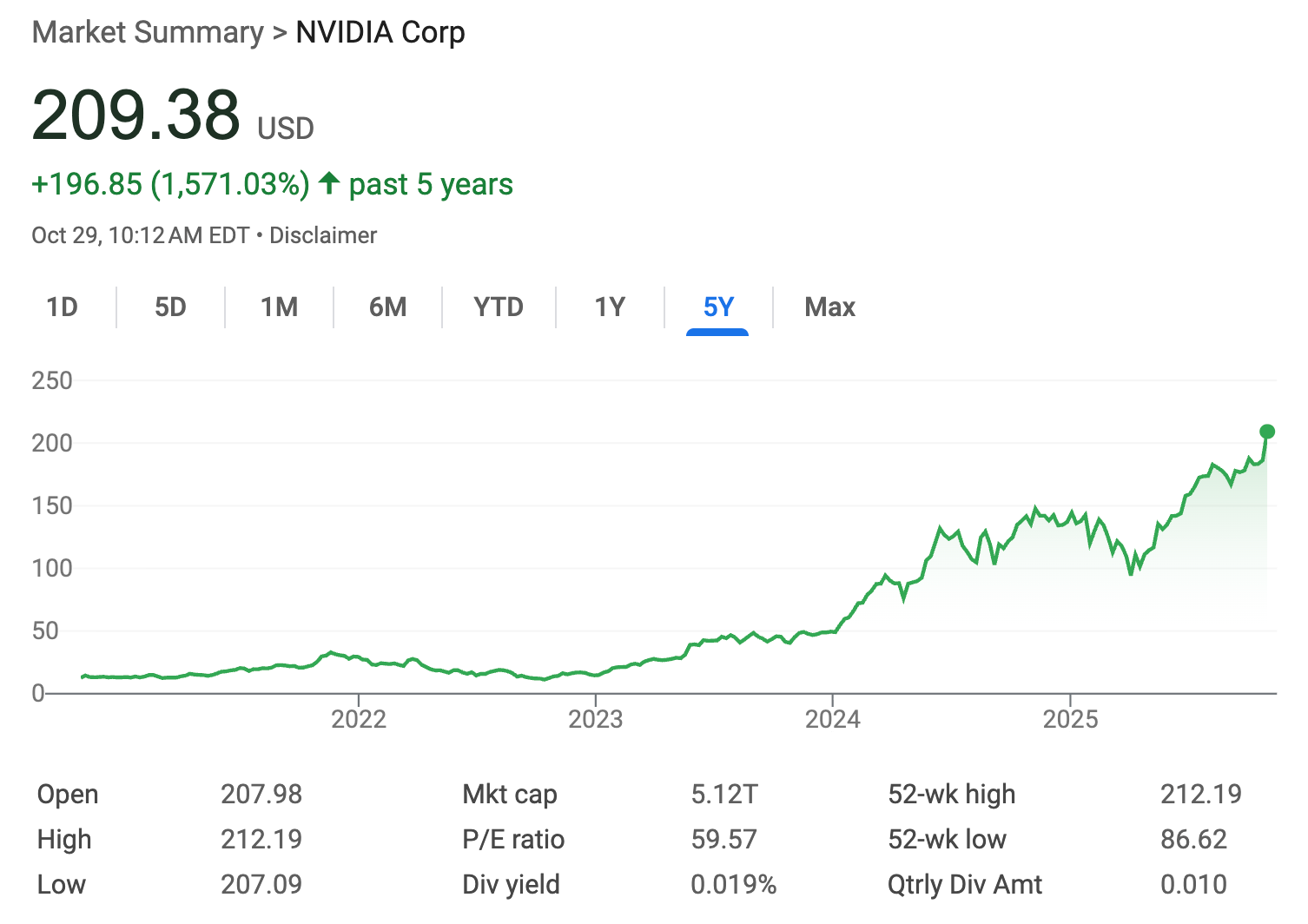Key Takeaways
- Nvidia reaches $5 trillion market cap driven by AI demand.
- Nvidia's AI chips remain central to US-China tech rivalry discussions.
- Investors, regulators and tech buyers face increased influence and scrutiny from Nvidia's dominance.
Nvidia made history on October 29, 2025, becoming the first company to reach a $5 trillion market valuation. The milestone comes just three months after the chipmaker surpassed the $4 trillion mark.
The Santa Clara-based company's shares have climbed 12-fold since ChatGPT's 2022 launch. This news comes after CEO Jensen Huang recently announced $500 billion in AI chip orders and plans to build seven supercomputers for the US government.

Table of Contents
- How Nvidia Secured Its $5 Trillion AI Stronghold
- Inside the Scramble for AI Processing Power
- Nvidia’s History and Strategic Focus
How Nvidia Secured Its $5 Trillion AI Stronghold
Nvidia's valuation reflects its key position in the AI ecosystem.
| Growth Driver | Business Impact |
|---|---|
| AI Chip Production | $500 billion in orders announced for advanced processors |
| Government Partnerships | Plans to build seven supercomputers for US government |
| AI Model Support | H100 and Blackwell processors power major LLMs like ChatGPT |
| Geopolitical Significance | Chips are focal point in US-China technology rivalry |
Inside the Scramble for AI Processing Power
"In the long run, we expect tech titans to strive to find second sources or in-house solutions to diversify away from Nvidia in AI, but these efforts will, at best, only chip away at, but not supplant, Nvidia's AI dominance."
- Brian Colello
Senior Equity Analyst, Morningstar
The AI chip race is a high-stakes battle for compute resources, with access to specialized processors becoming the true competitive advantage.
Nvidia's rise to $5 trillion valuation follows the company's recently announced plans to invest up to $100 billion in OpenAI while becoming its key chip supplier.
According to recent reports, companies are investing "tens of billions" in chips while seeing returns significantly lower than investments. Major players have formed strategic alliances — OpenAI with Microsoft, Anthropic with Amazon and Google — creating temporary competitive moats.
Meanwhile, traditional chip development has outgrown Moore's Law, with industry experts noting that AI hardware innovation now depends more on architectural breakthroughs than transistor density. As a result, new opportunities have emerged for specialized startups developing better connections, storage solutions and methods to eliminate bottlenecks in AI processing.
As AI models grow more complex, the financial aspect remains critical. Despite falling training costs, the development and deployment of AI models require substantial investment in terms of specialized hardware and energy consumption.
Related Article: NVIDIA & SCSP Spearhead New Task Force on AI Workforce Development
Nvidia’s History and Strategic Focus
Nvidia was founded in April 1993 by Jensen Huang (president and CEO), Chris Malachowsky (SVP for engineering and operations) and Curtis Priem (left the company in 2003). It primarily targets enterprise IT leaders, data center operators and organizations investing in artificial intelligence and advanced computing.
Nvidia’s Core Offerings in AI and Compute
Nvidia's core offerings include graphics processing units (GPUs), system-on-a-chip (SoC) products and software platforms for AI, machine learning (ML) and high-performance computing. Its CUDA platform enables parallel computing, while its data center solutions support workloads in AI, analytics and scientific research. The firm also provides specialized hardware and software for autonomous vehicles and edge computing.
Nvidia’s Role in the Global AI Ecosystem
Operating in the semiconductor and AI infrastructure sectors, Nvidia serves global enterprises, cloud service providers and research institutions. Its products are widely adopted by Fortune 500 organizations and technology firms seeking to accelerate compute-intensive workloads.
Analysts consider Nvidia a notable player in powering AI-driven applications and large-scale data centers. Its customer profile typically includes large enterprises, hyperscale cloud providers and organizations with significant investment in digital transformation.
